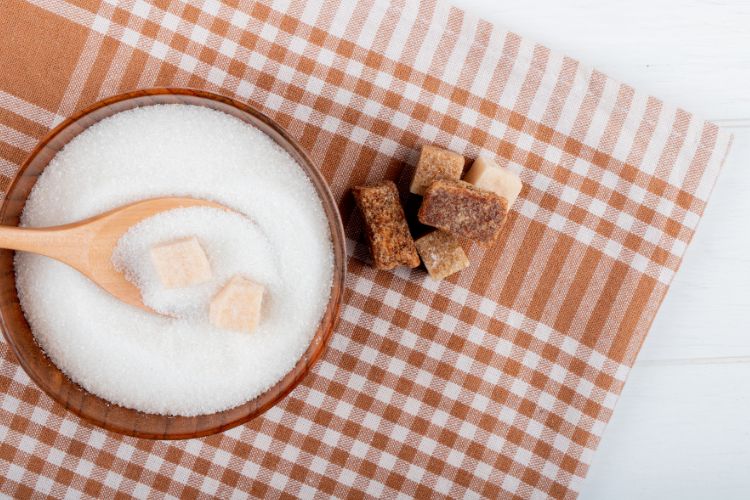Sign up for workout ideas, training advice, reviews of the latest gear and more.






Sugar is everywhere—in our snacks, drinks, sauces, and even in foods we perceive as healthy. With increasing awareness of its negative health impacts, many people are turning to sugar detoxes to reset their bodies and reclaim control over cravings. But a common question arises: How long does it take to detox from sugar? The answer depends on several factors, including your current sugar intake, metabolism, and overall health.
This blog will walk you through the sugar detox timeline, what to expect physically and emotionally, and tips for making the transition easier and more sustainable.
Excessive sugar consumption can lead to a wide range of health problems such as:
The body reacts to sugar similarly to addictive substances. It stimulates dopamine release, creating a cycle of craving and withdrawal. This is why cutting sugar isn’t just a physical battle but a mental one too.
A sugar detox involves eliminating added sugars and, in some cases, natural sugars from your diet for a period of time. The goal is to:
Depending on the detox approach, some programs cut all sugar cold turkey, while others gradually reduce intake over time.
For most people, a sugar detox takes between 7 to 21 days. However, some people may experience withdrawal symptoms within the first 3 to 5 days, while others may take several weeks to feel completely balanced.
The first few days are often the most challenging. If your diet previously included high levels of sugar, the body will start to react to its absence.
Common symptoms:
This stage mimics drug withdrawal. Your body has been used to regular dopamine spikes from sugar, so removing it can cause both mental and physical discomfort.
Tip: Stay hydrated, get enough sleep, and eat plenty of fiber-rich and protein-rich foods to stay full and manage blood sugar levels.
By the end of the first week, many people report a noticeable reduction in sugar cravings. Your energy levels may still fluctuate, but your mood starts to stabilize.
Changes you might notice:
This is the turning point. Your taste buds begin to reset, and you might start noticing how sweet certain fruits and vegetables taste naturally.
During the second week, your blood sugar and insulin levels begin to normalize. You’ll start experiencing the positive effects of being sugar-free.
Benefits include:
At this point, many people also begin to lose weight, especially if they’re also cutting out refined carbs and processed foods.
By the third week, your body has largely adjusted to the absence of added sugars. You may find:
While you might still enjoy the occasional sweet treat, you’re less likely to overindulge or feel controlled by sugar cravings.
If you consume large amounts of sugar daily (e.g., sugary drinks, candies, pastries), detox symptoms may be more intense and take longer to subside.
A diet rich in whole foods like lean proteins, healthy fats, vegetables, and whole grains can ease the detox process.
Exercise helps regulate insulin and reduces cravings. People who are active may experience a quicker and smoother detox.
An unhealthy gut microbiome—often caused by poor diet—can increase sugar cravings. Taking probiotics and eating fermented foods can support gut balance.
Proper hydration and quality sleep improve the body’s ability to flush out toxins and regulate mood and hunger hormones.
Here are common withdrawal symptoms you might experience during the detox phase:
While these symptoms are uncomfortable, they are temporary. Most people feel significantly better within two weeks.
Sugar is often hidden under names like high-fructose corn syrup, sucrose, maltose, dextrose, and rice syrup. Learn to spot them.
Instead of just cutting sugar, replace it with natural sweeteners (like stevia or monk fruit) or fresh fruits. This prevents feelings of deprivation.
Meal prep helps avoid impulsive choices. Include plenty of protein, healthy fats, and fiber to stay full.
Sometimes, sugar cravings are simply signs of dehydration. Drink water regularly throughout the day.
Stress elevates cortisol, which can trigger sugar cravings. Incorporate deep breathing, walking, or meditation into your daily routine.
Focusing on whole, unprocessed foods helps speed up the sugar detox process. Aim to eat:
By the end of a successful sugar detox, your body undergoes several positive changes:
Your blood glucose levels stabilize, reducing your risk of type 2 diabetes and improving energy consistency throughout the day.
High sugar intake is linked to chronic inflammation. Detoxing reduces systemic inflammation, which improves joint health, skin clarity, and heart function.
Lower sugar intake has been associated with reduced anxiety and depression. Mood swings subside as your brain’s chemistry rebalances.
Less sugar means fewer processed foods and better fiber intake, resulting in improved gut health and digestion.
Detoxing from sugar is a great first step, but the real challenge is maintaining those habits long-term. Here’s how to stick with it:
Tune into your hunger signals, chew thoroughly, and avoid eating when distracted.
It’s okay to indulge occasionally. The key is moderation, not deprivation.
Use bananas in baking, opt for dark chocolate over milk chocolate, or sweeten oatmeal with cinnamon instead of brown sugar.
Tracking what you eat can help identify patterns and triggers that lead to sugar binges.
Join a detox group, follow sugar-free communities online, or ask a friend to do it with you for accountability.
Absolutely. While the initial days of detoxing from sugar may be tough, the long-term benefits for your physical and mental health are substantial. In as little as 7 to 21 days, you can reduce or eliminate cravings, balance your energy, and build a healthier relationship with food.
Whether your goal is weight loss, clearer skin, better mood, or increased focus, breaking free from sugar’s grip is a powerful step forward. Listen to your body, stay patient, and celebrate small victories along the way.
Most people stop experiencing intense sugar cravings within 5 to 10 days, though full reset may take up to 3 weeks depending on prior intake.
In most detox plans, whole fruits are allowed—especially low-glycemic fruits like berries. They provide fiber and antioxidants while helping with sugar cravings.
Yes, many people experience weight loss, especially from reduced water retention and lower calorie intake, depending on the rest of your diet.
Don’t be hard on yourself. Sugar is addictive, and it takes time to fully adapt. Just pick back up where you left off and keep moving forward.
How long it takes to detox from sugar depends on your starting point and your body’s response, but most people notice improvements within 7 to 21 days. The benefits—ranging from reduced cravings and better mood to weight loss and improved health—are well worth the effort.
By understanding the detox timeline, preparing for withdrawal symptoms, and using the right strategies, you can reset your body, improve your well-being, and regain control over your nutrition.
Stay up to date on the latest women’s health, fitness and lifestyle trends and tips.